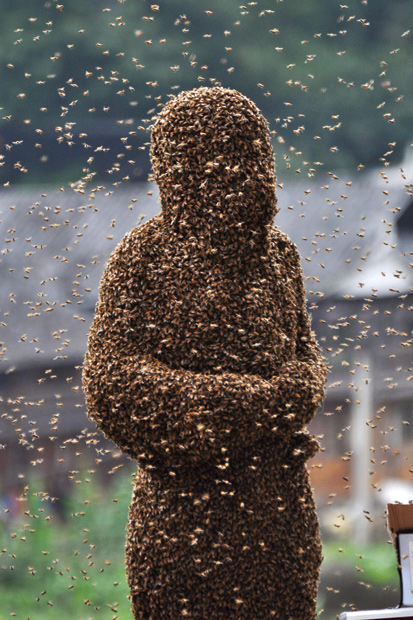The importance of biodiversity, a handy concept that embraces diversity of eco-systems, species, genes and molecules, has been promoted for over three decades. Yet much life on Earth still faces unsustainable loss or extinction, perhaps because, as an otherwise upbeat Dave Goulson notes in A Buzz in the Meadow, ‘at a global level, conservation efforts so far have been a dismal failure’.
A bumblebee specialist with an extensive interest in the natural world, Goulson presents an inspirational case for awareness and appreciation of the teeming diversity of living things that exists even in our gardens or the local park. In this discursive account of the insects in a French meadow, he demonstrates how indispensable these small, often despised creatures are to human existence, and its survival.
His old farmhouse and 13 hectares of meadowland in the Charente, 65 km north-west of Limoges, is a haven for wild-flowers and insects, including 70 bee species, providing plentiful research material and experimental space. He celebrates the varied wildlife of his patch like a latter-day J.H. Fabre, but fired with passion for evolution, a theory that brilliant French naturalist and writer never accepted. Goulson’s sheer enthusiasm for wild things, from the lizards, mice and spiders that share his home to minute tardigrades or ‘water bears’ that wriggle in damp moss cushions, is that of a young Gerald Durrell on Corfu. Schooled in the field-based science tradition of E.B. Ford and other Oxford ecological geneticists, Goulson is himself a scarce species, a university professor who is as much naturalist as laboratory scientist. No ivory tower don, he engages his readers in clear, lively language, avoids jargon and presents his thesis with a smile, not doom and gloom.
He guides us chattily on an extended field trip about the great meadow, wet places, hedges, green sunken lane, scrub and trees of his farm, with absorbing narratives of insect life, flower pollination and nectar robbing, assorted amphibians, sex chromosomes, the genetics of red and white campion, island biogeography and much else. He links often lurid life histories of insects — bees, beetles, mantises, wasps, flies, ‘true’ bugs (including the vile bedbugs that infested his student house), butterflies and dragonflies — with anecdotes from his academic career, not just showing where insects fit into nature’s tapestry but also revealing the intellectual and practical processes, the pain and excitement of scientific research, from hunch and hypothesis through evidence from observation and experiment to final publication.
Far from mere academic self-absorption, these studies have far-reaching consequences. In particular, Chapter 13 on ‘The Disappearing Bees’ is salutary and topical, the story of the catastrophic decline of bees, both honeybees and bumblebees and other wild species. Ultimately crops could lose pollinators, a trend already recorded worldwide, undermining a basic support system of human society — all this despite the considerable public monies diverted to subsidise wildlife-friendly farming.
How Goulson and others have elucidated, against determined opposition from vested interests, the damage neonicotinoids or ‘neonics’ (systemic insecticides that mimic nicotine, once itself a standard pest control) can do to bees — including collapse in queen numbers and a disastrous disorientation effect on worker bees — is a tale of determination and perseverance amidst the complex social, political and ethical implications of modern science. From December 2013 a (two-year only) EU ban prohibits the use of neonics in crops that attract bees, despite pressure from the UK government, pesticide producers and many farmers.
The last chapter of A Buzz in the Meadowdigresses from insects to a broader look at human global expansion, our extermination of the larger animals and colonisation of even the smallest islands. Goulson cites the familiar yet instructive story of how people finally reached remote Easter Island, felled the trees, wiped out native birds and degraded the soil, substantially contributing to subsequent poverty and population collapse. Earth too is an island, as he puts it ‘a spherical rock … floating in the unimaginable vastness of space’, and insects are but one element of her finite living resources.
Professor Goulson earlier reminds us that species-rich habitats are themselves today isolated, fragile islands in inhospitable urban and agricultural landscapes. Politicians and all of us should heed his eloquent appeal to cherish nature and his message that biodiversity, all of it, does matter.
Available from the Spectator Bookshop, £14.99 Tel: 08430 600033





Comments